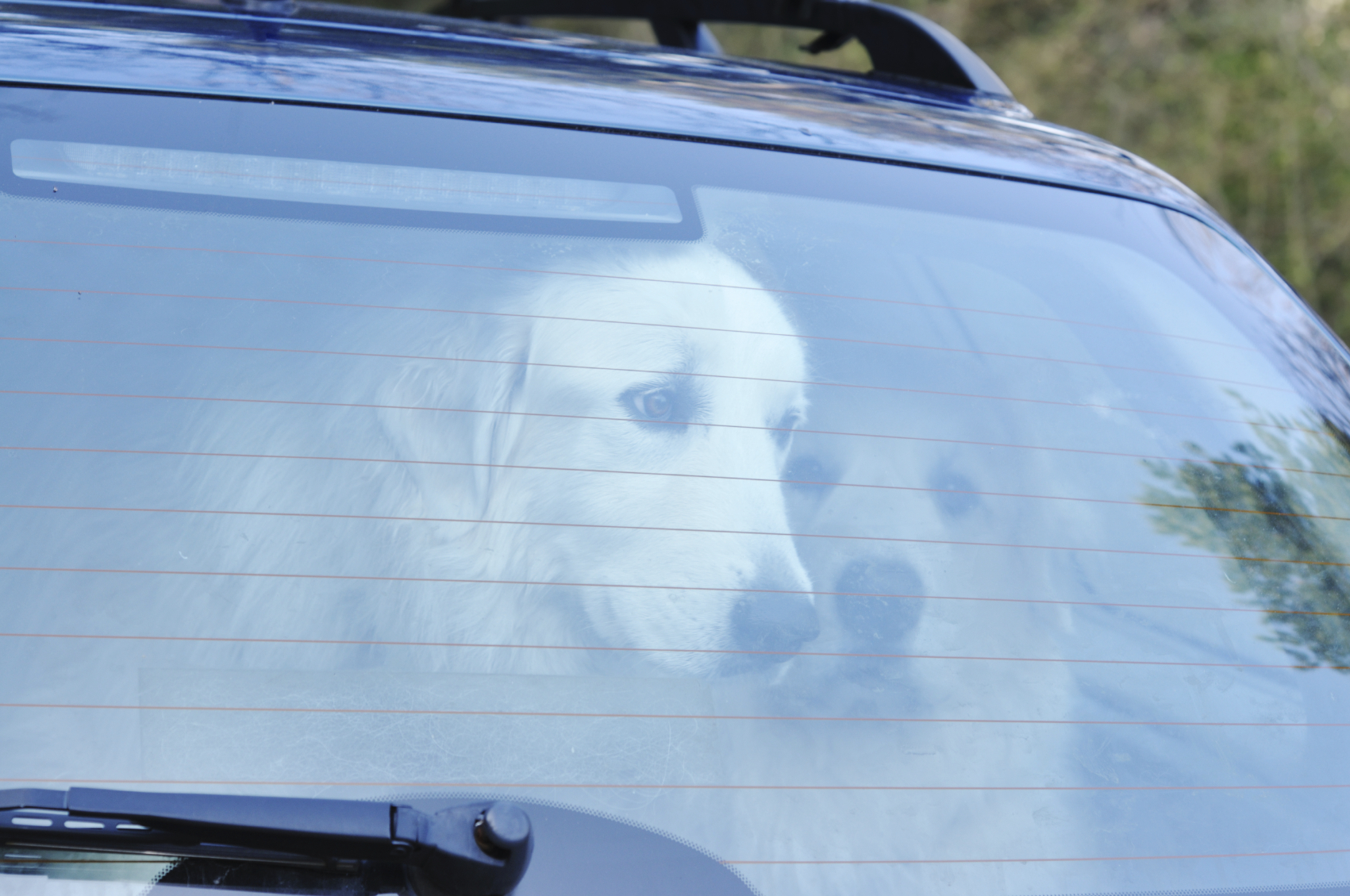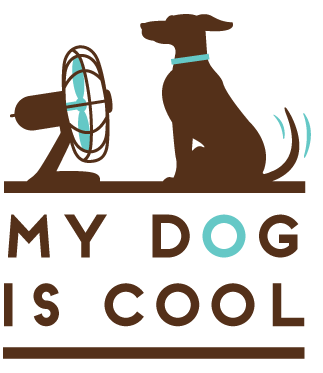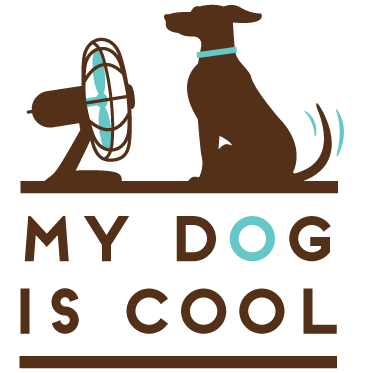
13 Sep Heat Stroke
Article reprinted with permission from The Pet Center and T. J. Dunn, DVM.
It might only be ten minutes … and the dog or cat will be near death! And sometimes even if heroic treatment measures are taken the animal will die from massive intravascular clotting, hemorrhaging, cerebral edema and kidney failure. It is a gruesome thought but every day dogs and cats suffer from heat stroke due to inattention by their caretakers. In most cases, the pet is left “for just a minute” … but for various reasons the pet’s owner is distracted by something unusual, or delayed beyond what was expected … and returns to the vehicle to see their pet collapsed, salivating, panting uncontrollably and losing consciousness. Don’t let it happen to your pet.
Unattended Pets
Leaving a pet alone in a vehicle has a number of potential risks. Always be conscious of the effects of heat buildup in a vehicle because it only takes a few minutes for the internal heat to increase forty degrees above the outside air temperature … especially in direct sunlight. Even a dog’s body heat (expired air in the dog’s breath is 102 degrees (38.9 C), and has 100% humidity!) will act like a heater inside an enclosed space.
Leaving windows open slightly at the top surely helps IF there is a breeze. However, that opening also invites children to poke their fingers in or unkind folks to tease the dog with sticks. Pets left in cars are at a severe disadvantage when it comes to being able to dissipate heat from their bodies. Even in the shade, and especially in humid conditions, dogs need to inhale air cooler than their normal body temperature of 102 degrees (38.9 C). In fact, even 80 degree (26.7 C), air temperatures can be dangerous. Heat stroke is a dire emergency and one from which many pets do not recover. And you’d be shocked to find out just how fast it can occur. If you ever find your pet distressed from overheating in a vehicle, get to the nearest animal hospital immediately … don’t even call first… just GO!
What Exactly Is Heat Stroke?
Living cells have temperature tolerance limits. Go beyond those limits and the cell breaks down, looses functional capacity, releases chemicals within itself that cause more adverse reactions, and eventually ceases to function and dies. Tolerance to higher than optimum temperatures for mammals breaks down at about 107 degrees (41.7 C). And the death of the cell (that state where the traumatized cell cannot recover from the heat injury) occurs when time and temperature factors combine to terminate the cell’s integrity. The longer the cell is above the 107 degree (41.7 C) level the less chance there is for the cell to recover. The higher the temperature becomes above 107 degrees (41.7 C) the faster the cell death occurs. In pets confined to a space where the ambient (surrounding) temperature and humidity are above tolerable levels the animal’s body will begin to acquire heat from the environment faster than it can dissipate that heat.
In overheated humans we begin to sweat, which evaporates (unless the humidity is 100 percent), and cools the skin surface and assists in dissipating that heat buildup. In fur covered dogs and cats that have very few sweat glands to begin with and the only means of dissipating excess body heat is via panting. This movement of air over the moist tongue and airway surfaces increases evaporative cooling (again, unless the ambient humidity is 100 percent).
Unfortunately, panting is a rather inefficient means of dissipating body heat and actually generates some heat due to the muscle activity involved. Keep in mind that as an animal is confined to a closed space the expired air, which is at 100 percent humidity and 102 degrees (38.9 C), will eventually increase the ambient humidity and temperature of the animal’s space. Plus, especially with larger animals such as Great Danes and St. Bernards, their body heat will increase the ambient temperature in the vehicle. It should be readily obvious that leaving an animal in an enclosed space, even if the vehicle is in the shade and even if the outside temperature is only in the seventies, will cause a buildup of temperature and humidity in that vehicle. Time and temperature and humidity are critical factors in the development of heat stroke in pets. And once the animal’s cells reach 107 degrees (41.7 C) it is crucial for any chance of recovery to lower that temperature as fast as possible. Otherwise death will result no matter what you do to try to save the animal.
Signs of Heat Stroke
Signs of heat stroke are intense, rapid panting, wide eyes, salivating, staggering and weakness. Advanced heat stroke victims will collapse and become unconscious. The gums will appear pale and dry. If heat stroke is suspected and you can take the animal’s temperature rectally, any temperature above 106 degrees (41.1 C) is dangerous. The longer the temperature remains at or above 106 degrees (41.1 C) the more serious the situation. If you return to your car or the area in which the animal was confined and find your pet seems to be highly agitated, wide-eyed and panting uncontrollably … start for the nearest animal hospital right away with the air conditioning at full blast. Otherwise get the dog to a cool area and begin the treatment for heat stroke.
Treatment for Heat Stroke
Take the pet’s temperature rectally if possible. A body temperature of about 105 degrees (40.5 C) or higher is probable evidence for heat stroke. Place your pet in a tub of cool running water or spray with a hose being sure the cool water contacts the skin and doesn’t simply run off the coat. Thoroughly wet the belly and inside the legs. Run the cool water over the tongue and mouth. Take a rectal temperature if possible to know when to stop cooling. A safe temperature is about 103 degrees (39.4 C). A small dog will cool down much faster than a large dog. Once the temperature gets to 103 or 104 (39.4 – 40 C) degrees do not cool the pet any further because the cooling effects will continue to bring the temperature down even further. Seek veterinary attention as soon as possible.
If you are near an animal hospital, go there right away. At the animal hospital they may administer oxygen, cortisone and dextrose to help protect the traumatized cells. The staff can provide proper cooling measures and monitor the dog’s temperature, heart rate and provide oxygen which some evidence indicates may help protect stressed body cells. Providing intravenous fluids and anticoagulants may be utilized as well.
What Does Heat Stroke Do?
In severe cases, the elevated body temperature triggers chemical reactions in the cells of the body … highly active cells such as brain, intestinal and liver cells are at greatest risk for heat trauma. The metabolic disturbances brought on by excessive heat instigate the release of chemicals within the cells that cause the ultimate destruction and breakage of the cell. Most heat stroke victims are dehydrated, as well, and their blood thickens to the point that the heart has severe stresses placed on it in trying to pump the abnormally viscous blood through the blood vessels. The result is stagnation of blood, blood clotting and eventual death of tissues due to what is termed ischemic necrosis.
Wherever a clot forms, the tissues nourished by that clogged vessel die from metabolic starvation. The dying cells give off chemicals that further damage surrounding tissues and a point is reached beyond which no recovery is possible. In some unfortunate situations where the heat stroke victim has experienced a dangerously high body temperature for a length of time such that too many brain and other body cells have been damaged, no matter what life saving measures are employed and bioprotective medications are administered, death will result.
How to Avoid Heat Stroke
Always be careful about leaving pets in vehicles or tied out in the direct sunlight during warm, sunny days … even a few minutes can be critical. And flea markets and other outdoor activities are often the worst place to bring a dog on a hot summer day. Factors that increase an animal’s risk of developing heat stroke include:
- water deprivation
- enclosed space
- excessive humidity
- obesity
- exercise
- age
- cardiovascular disease
- lack of acclimatization
Short faced (brachycephalic) breeds such as Boxers, Pekingese, Pugs and dogs with heavy coats are at greater risk for heat stroke than some other breeds. Also age, heart trouble, and physical condition such as being overweight all contribute to a lesser efficiency in dissipating heat buildup in the body. Any animal or human when faced with the ambient conditions of high temperature, high humidity and time to build up heat within the body faster than heat can be dissipated, can face the tragedy of being a victim of heat stroke. All it takes to avoid this serious problem it diligence and common sense.
Older pets have less resistance to stresses such as traveling, heat, noises, and unusual activities. Excitement or discomfort brings on panting and elevated metabolic rate which elevates the animal’s temperature; and if the animal cannot remove that heat buildup within its body it may be just a matter of a few minutes before the dog or cat get into some serious medical difficulty.
A NOTE FROM DR. DUNN: One of my “pet peeves,” and pardon the pun, is to see people bringing their dogs to summertime activities oriented for humans. I can never comprehend why people insist on having their dogs with them at events such as flea markets, Art In The Park, craft shows, car shows, parades and carnivals. Dogs don’t care about arts and crafts, parades or carnivals! And quite honestly they would have a much better day if left behind in the safety and shelter of their homes. Most of these events are crowded enough with people and children, and distractions and activities abound that have no relevance to the dog’s enjoyment; so why subject the animals to the heat and excitement of these human activities? Be mindful, too, that your dog’s pads can suffer heat trauma from contact with hot asphalt or other summer-scorched surfaces. There are times when you need to consider if the wisest decision might be to leave the dog at home if you won’t be able to provide it frequent relief from the heat and humidity.



Sorry, the comment form is closed at this time.